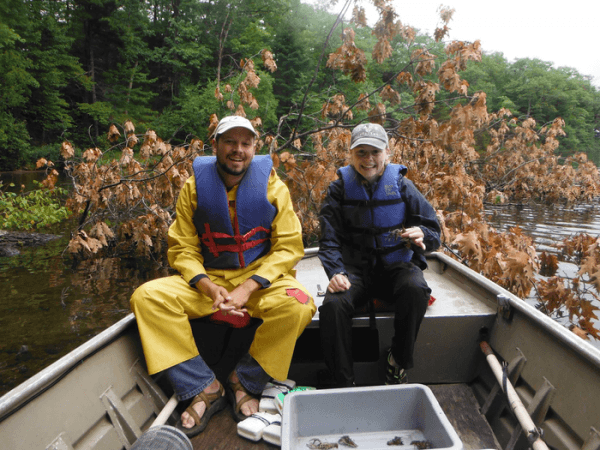In many North American lakes, a tiny clawed creature has become a big bully. The invasive rusty crayfish roams lakebeds, snapping up snails, bivalves, and water plants, cutting off food supplies for native crayfish and other animals. And when they’re feeling saucy, some mount daring raids on fish eggs, reducing sport-fish populations.
It’s those extra bold individuals that intrigue Eric Larson, associate professor in the Department of Natural Resources and Environmental Sciences at the University of Illinois. He and his students visit the lakes of northern Wisconsin every summer to keep track of the crabby critters. And now, in a new study, they’ve figured out why some lakes have bolder, more aggressive crayfish.
“Crayfish seem more behaviorally specialized in lakes where they’re highly abundant, becoming more aggressive, bold, or active,” Larson says. “Even if only a few of them become specialized in this way and nest-raid on recreationally important fish, those few individuals could lead to sunfish or other fish being excluded in these lakes. That’s why we’re looking at behavioral specialization on the level of individuals."
The study of individuals is a relatively recent phenomenon in ecology. In the past, oddball animal behaviors or personalities were usually treated as outliers or noise to be statistically smoothed in ecological datasets. Now, ecologists recognize these more specialized individuals could be disproportionately responsible for large-scale ecosystem changes and could even signal the beginnings of new species. In any case, they’re worth a closer look.
Read more at University of Illinois College of Agricultural, Consumer and Environmental Sciences
Image: University of Illinois researchers separate diet and behavioral specialization in invasive rusty crayfish using stable isotopes and laboratory behavioral assays. (Credit: University of Illinois)


